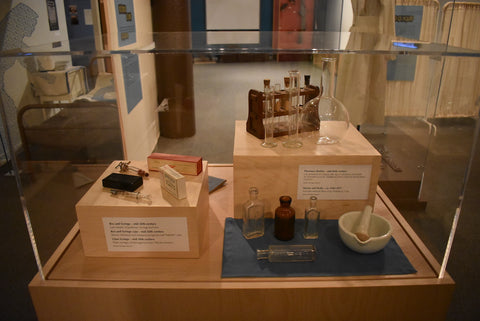

ONLINE EXHIBITION
Spanish Influenza
The first wave of the flu, a less destructive form, appeared in the early part of 1918. The source of the virus is not known, but when it got to Spain and the King became infected, it was dubbed “Spanish Influenza”. Before the First World War had ended, the flu was making its way around the world and across Canada. The second and third waves were in the fall of 1918 and the winter of 1918-19. The mutation of the virus had given it the power to infect and kill its victims within a day, even the young and healthy. Some soldiers who had survived the war sadly died only weeks or months after they returned home.
One cause for its rapid spread in Canada was the cross-country train journey of a group of infected Canadian soldiers en route to Siberia. It was the end of September 1918 and health officials were utterly unprepared. While they were still considering prevention and quarantines, most didn’t even know the flu had already arrived in the major cities along the Trans-Canada line. As many as one-in-six Canadians were ultimately infected.
Globally, the Spanish Influenza pandemic infected upwards of 500,000,000 people—one third of the world’s population. Upwards of 50,000,000 died. 30,000–50,000 of those were Canadians, almost as many as had died in the war. In Alberta, the flu would kill 3,259, although many deaths were likely unreported. As with other diseases, the Indigenous population had a higher percentage of mortality, partly because of the living conditions on reserves. Of a national population of 106,000 the Department of Indian Affairs reported 3,694 deaths.
Image Credit: It may have been the day of her husband’s funeral. Albert Callihoo died in 1918 of Spanish flu. Back, left to right: Ben Gray, Isidore, Louise, Samuel Callihoo, Colin Gladu Front, left to right: Victoria, Marguerite, Alice, Nancy Callihoo, Alice Mitchell


